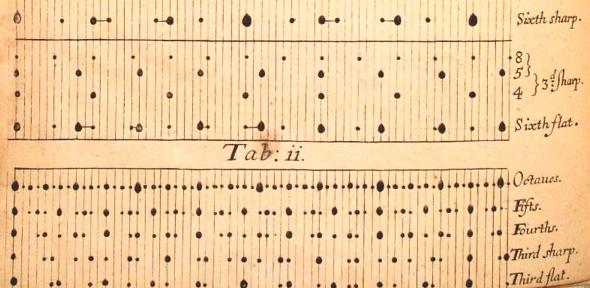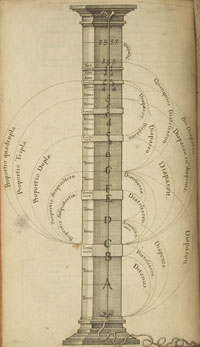
Relationships between music, mathematics and science have strongly influenced the thinking of music theorists and philosophers since ancient times when it was found that music's natural consonances and scales were the product of simple whole-number ratios.
In Greece followers of the philosopher Pythagoras (c. 570–c. 495 BC) identified musical intervals with the ratios of lengths of strings. The difference in length between two strings sounding music's most pleasing interval, the octave, was found to be in the ratio 2:1. Similarly, music's second most pleasing interval, the 5th, equated with the ratio 3:2, whilst the 4th equated with 4:3.
This hierarchical correlation between mathematical and musical perfection led Greek philosophers to see these numbers as a manifestation of universal truth. A complex system of scales based on whole number ratios was established that would form the basis for a hugely prestigious theoretical tradition that saw musical ratios as the organisational basis for the human soul and cosmos. It is this theoretical tradition that forms the backdrop to explorations into music theory undertaken by many of the key figures in early modern science.
In the Whipple collection there are numerous references to music theory in science texts dating from the 15th-century beginnings of printing to the 19th century. Exhibits here include works of Isaac Newton, Robert Fludd, Athanasius Kircher, Gaspar Schott, John Wallis, Francis Bacon, John Harrison, and others. In them we see how theories forged in antiquity concerning music and universal harmony influenced philosophical, scientific and musical thought in the 17th and 18th centuries.
Tim Eggington

